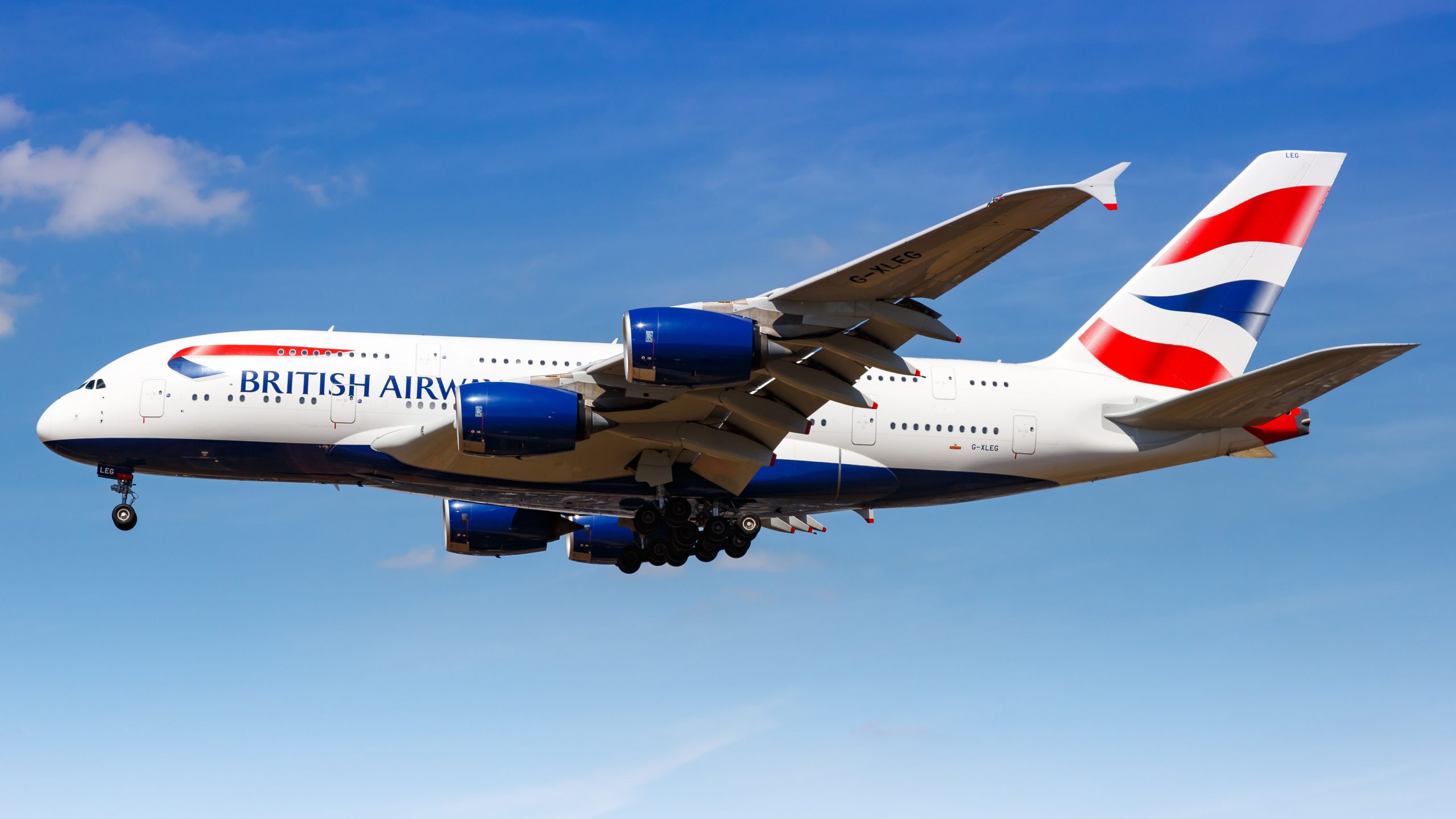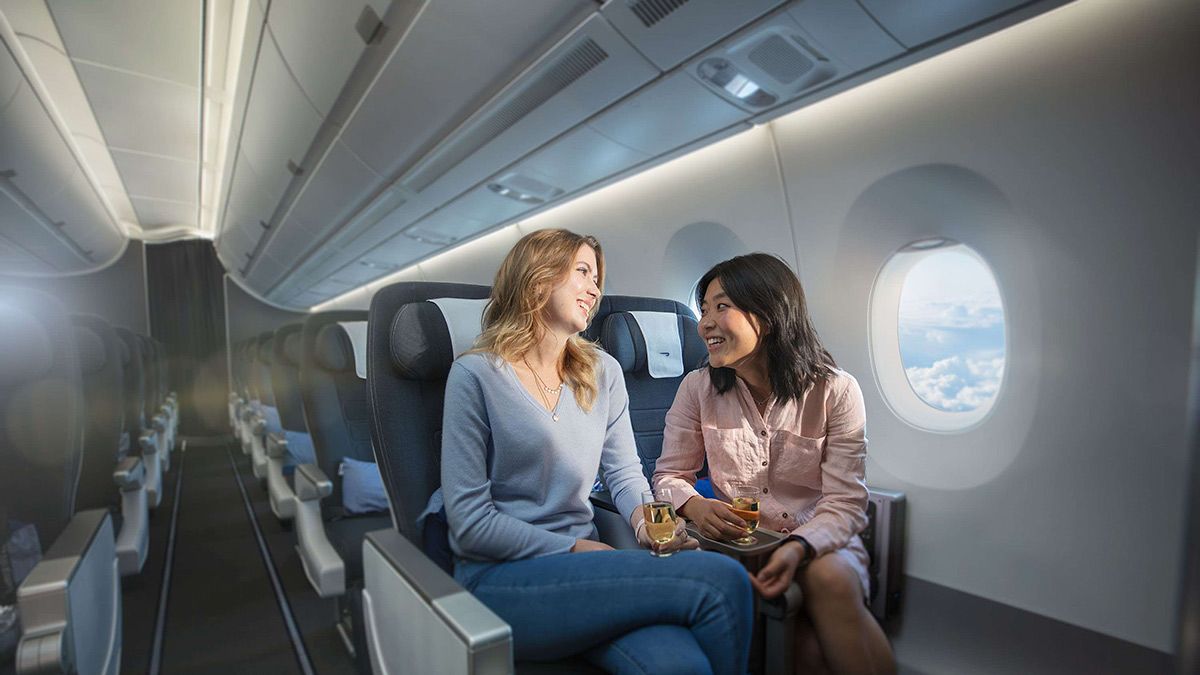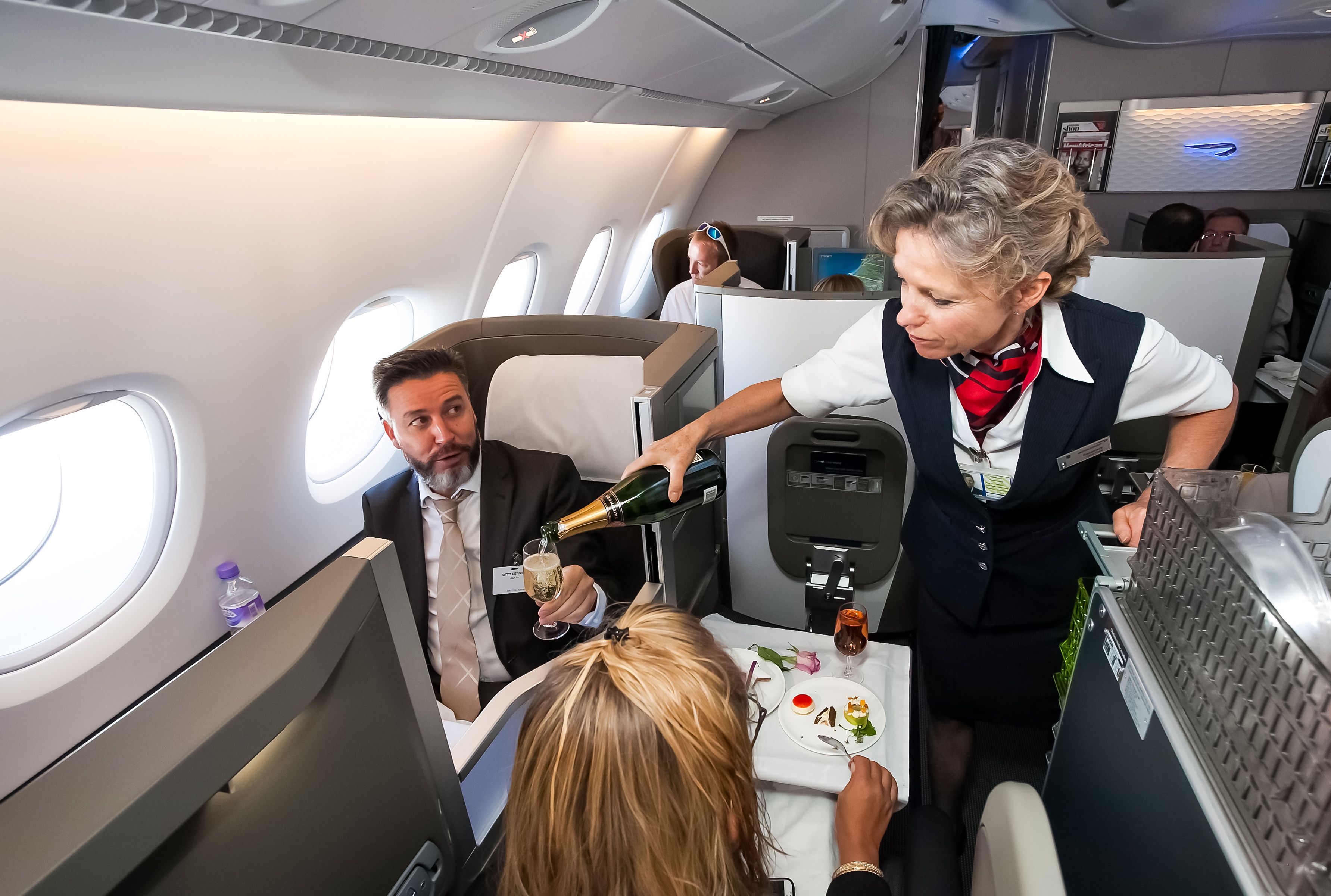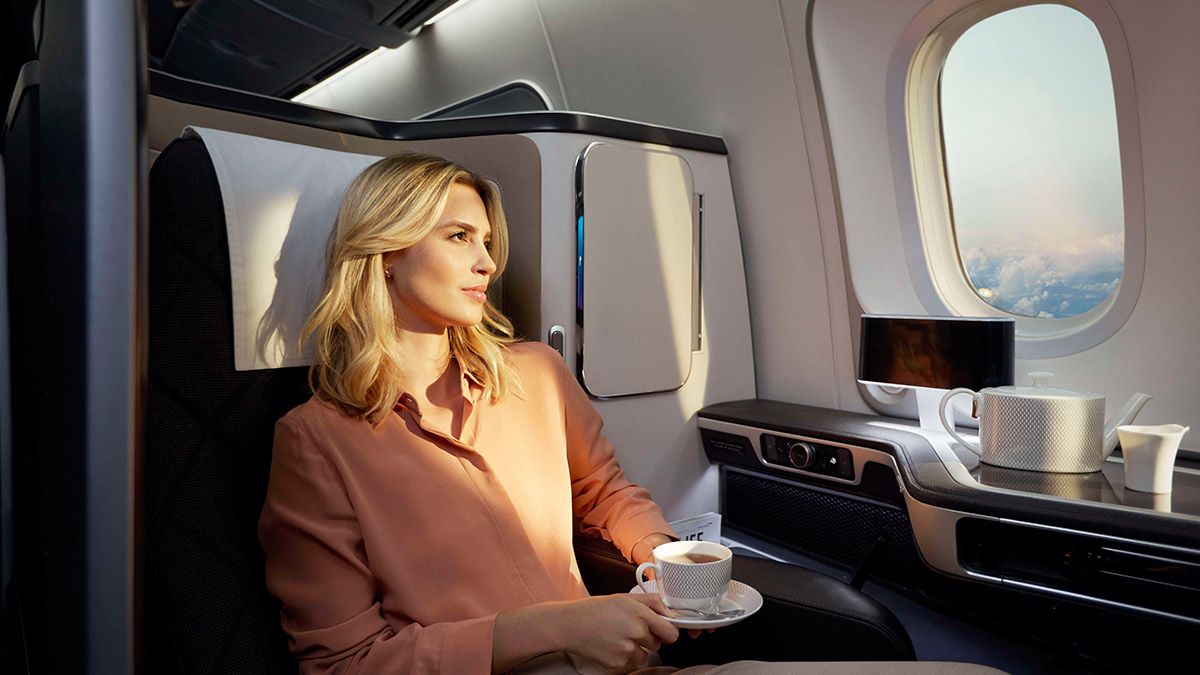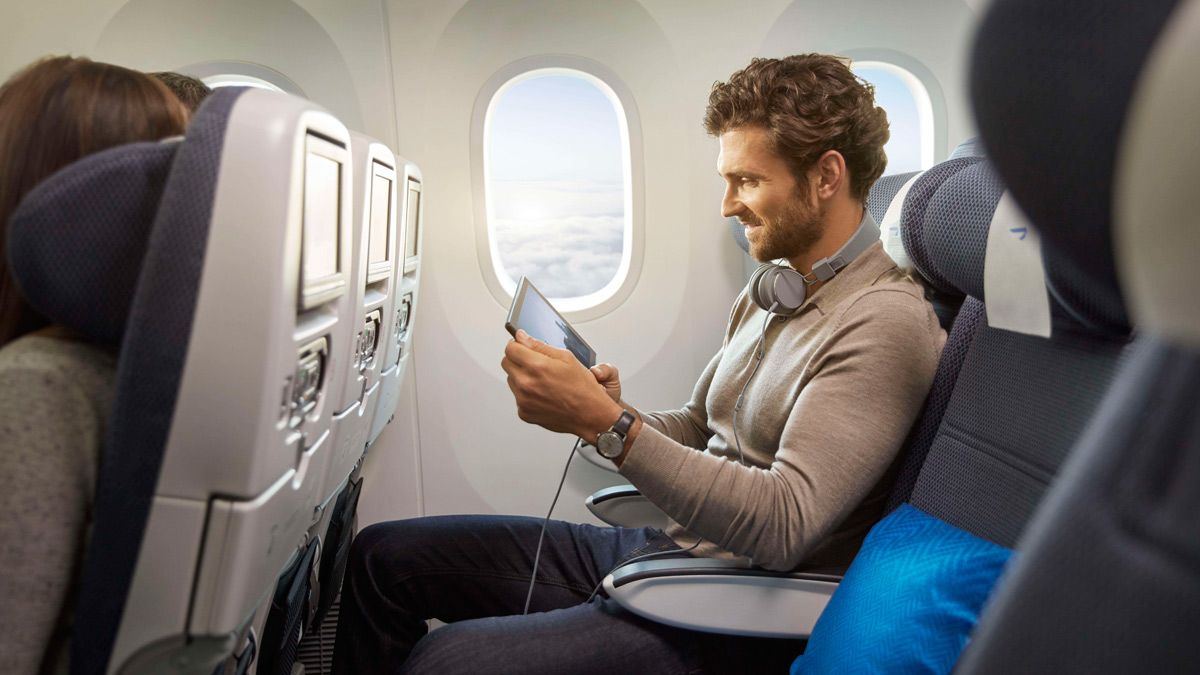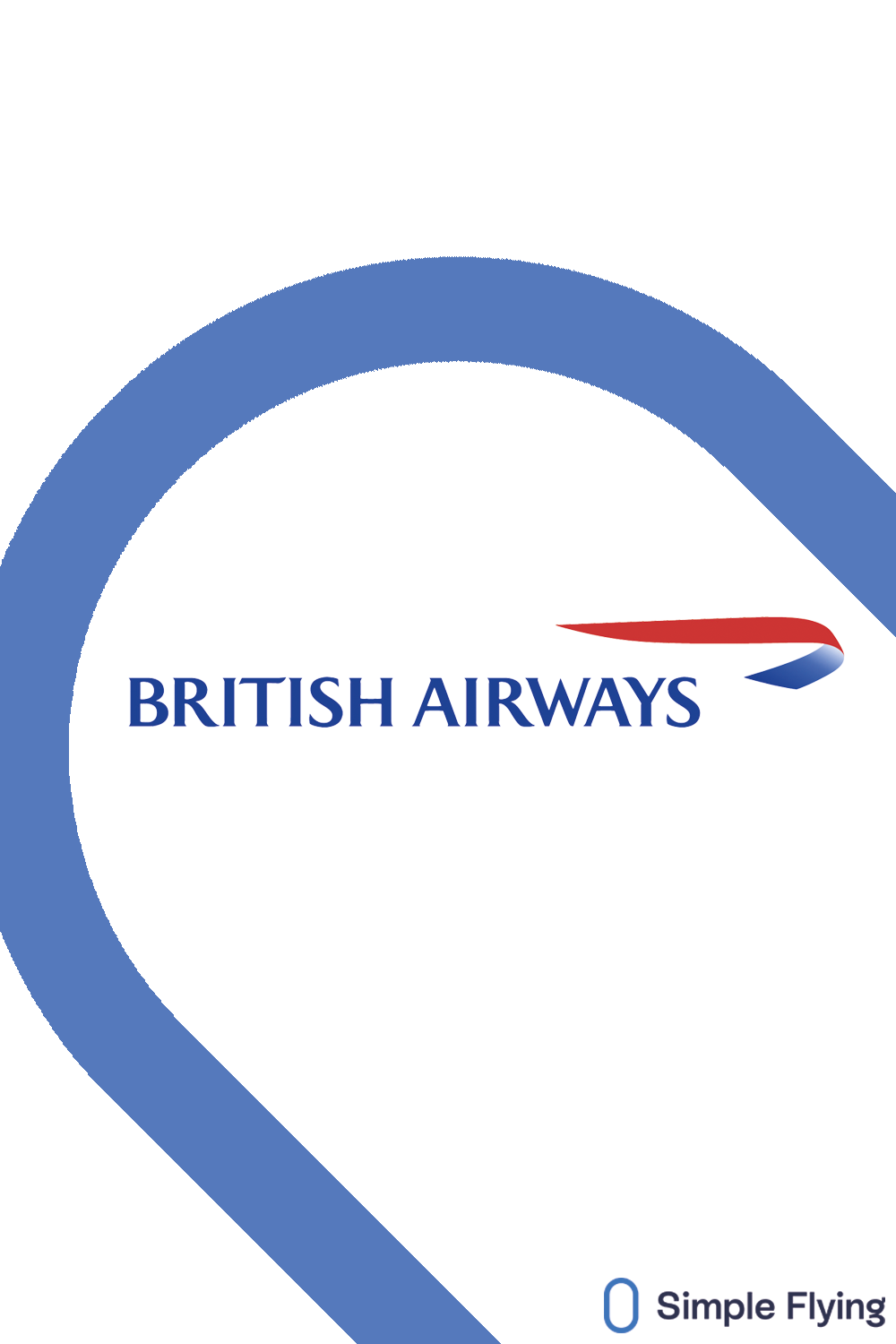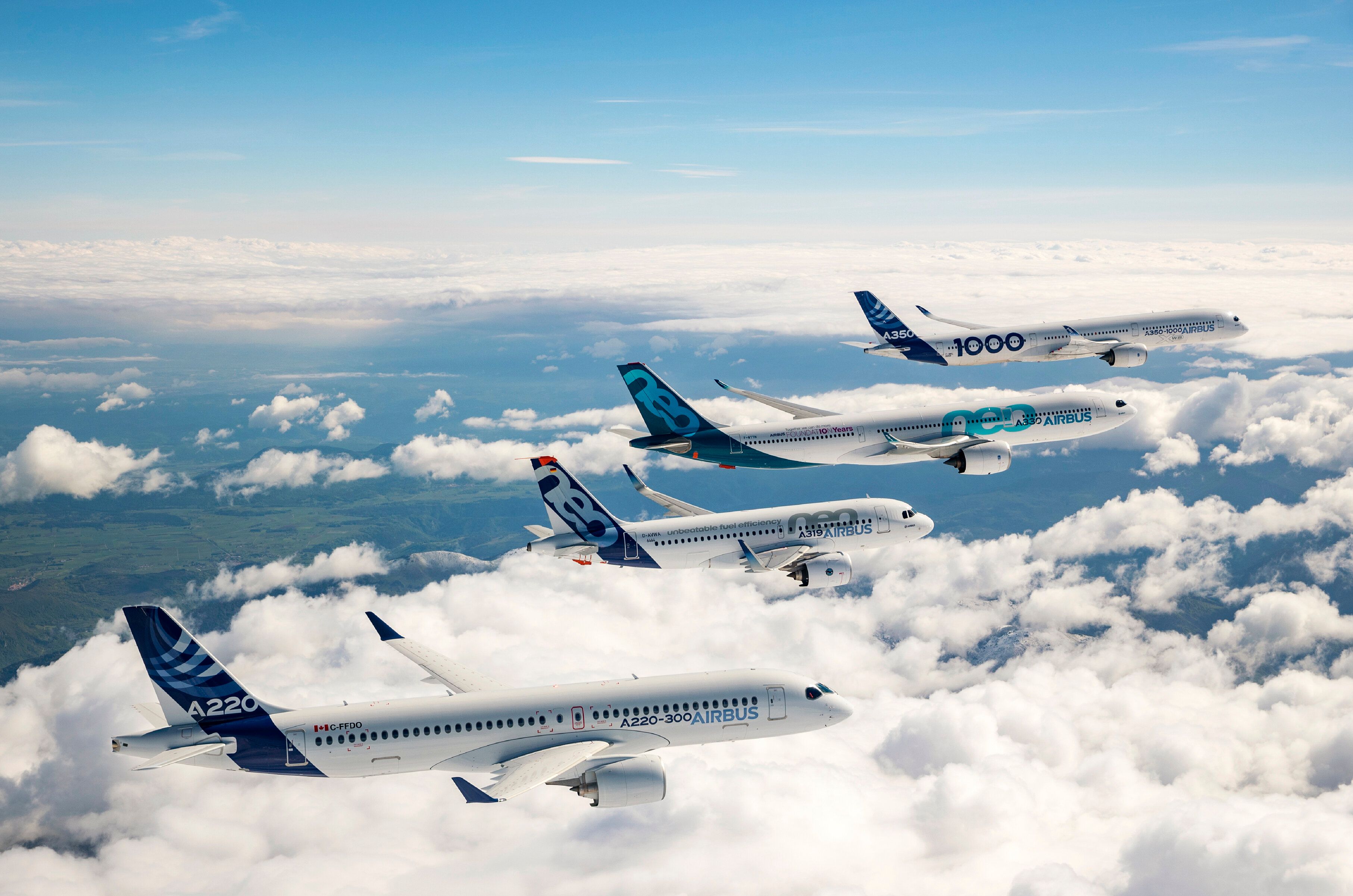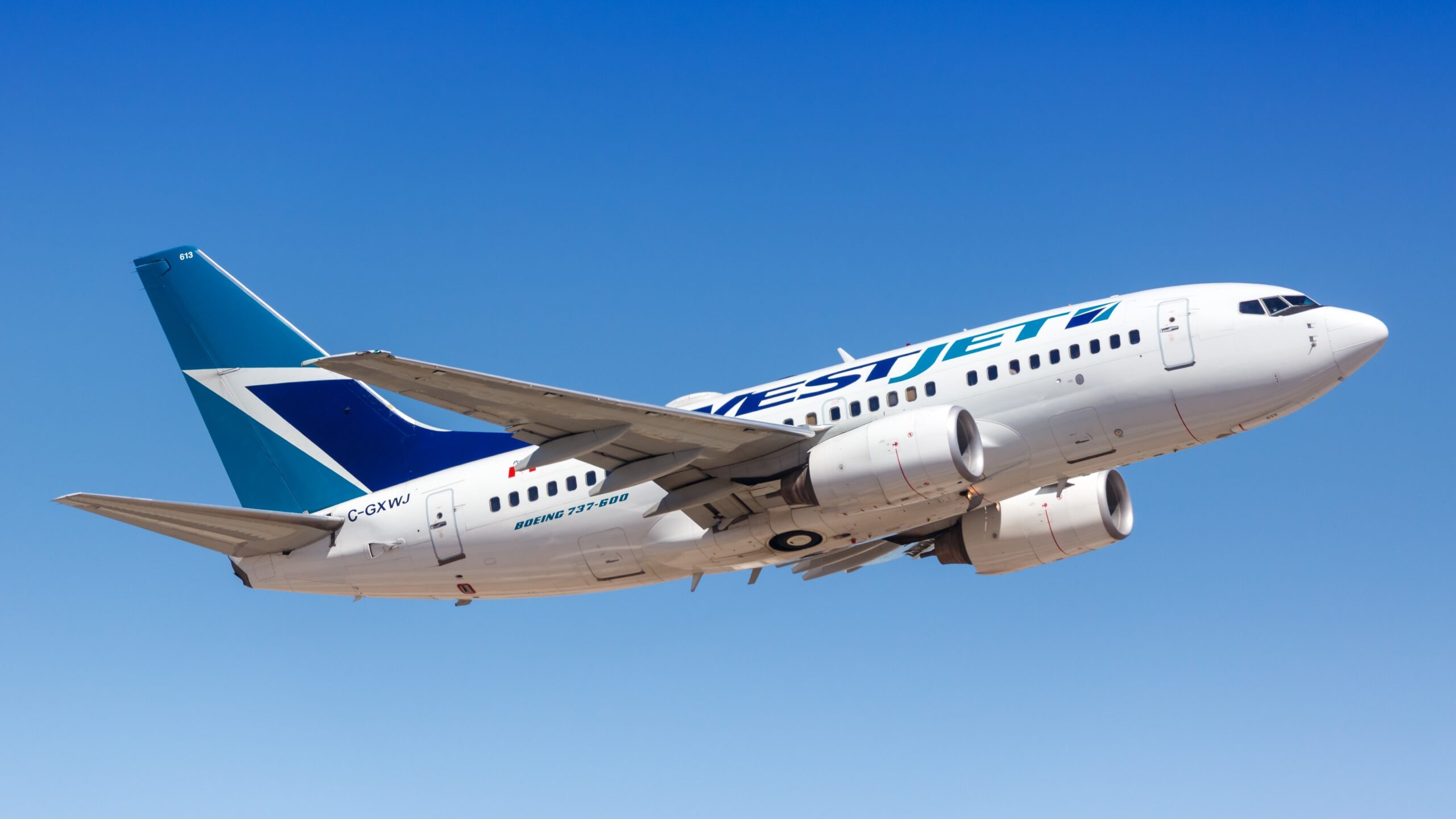With all twelve of its Airbus Super Jumbo aircraft active (though, at the time of writing, one example is in maintenance), there are significant opportunities to fly on the A380 with the UK flag carrier. While exceptions exist, many aspects of travel, especially concerning soft products, are typically not related to a specific type of aircraft and are available on several types with the same service class. What is more apparent in most cases are overall cabin design and configuration differences between different aircraft. Let’s look a bit closer at some of the nuances of BA’s A380 cabins.
1 Great premium economy configuration
British Airways offers its premium economy product, named “World Traveller Plus,” on most of their long-haul aircraft from Airbus and Boeing, and has been for over 20 years now. Across many types, you will find this class of travel configured in a 2-4-2 layout, which, to be fair, is reasonably standard. However, the A380 is only one of two BA aircraft types to offer a more comfortable 2-3-2 layout (the other is the Boeing 787).
Photo: British Airways
World Traveller Plus passengers onboard the British flag carrier’s A380s can enjoy wider seats and enhanced legroom in the cozy 55-seat cabin. Other benefits over World Traveller (standard economy) include complimentary bar service, noise-canceling headphones, an amenity kit, more baggage allowance, and priority boarding.
2 Unique business class layout
While first class onboard British Airways Airbus A380 is in a 1-2-1 reverse herringbone configuration, perhaps the standard for modern business class cabins, BA’s Club World (business) is an interesting mix of different layouts. On the main deck, these lie-flat beds can be found in “2-4-2,” and up top, they become “2-3-2.”
Photo: Sunshine Seeds / Shutterstock.com
Those numbers are in quotation because looking at a cross-section of the cabin may make it seem they are set up in 1-2-1 (or 1-1-1) by using an alternating pattern of forward and rear-facing seats. In this way, BA is able to fit an impressive 97 business class beds in a four-class aircraft, but there’s an infamous issue with aisle access. Unless you are in a proper aisle seat (B, D, G, J on the main deck, B, D, F, J above) or one of a select couple of other seats (15E, 15F, 53E, 59E), you have to step over someone’s feet on a little platform that comes down.
3 3-Class upper and lower decks
Today, about a dozen or so carriers are utilizing the Airbus A380. This is fortunately aided by the many examples that have come out of retirement because of the impressive rebound in air traffic after the last couple of years. However, British Airways has its cabins split up in a way unique to everyone else.
Photo: British Airways
Regardless of three or four-class setups by other airlines, according to SeatGuru, none have no more than three classes on one deck and two on the other. However, BA’s A380s are unusual in that both decks are split between three classes. On the main deck, you have first class, followed by one business class and two economy sections. On top are two small business class cabins, premium economy, and two economy sections (the very last of which is exceptionally small with only 32 seats).
4 25D
Onboard British Airways’ Airbus A380, you’ll find, as mentioned above, four separate economy class cabin areas. These range from rows 20 – 31 (3-4-3), 35 – 42 (3-4-3), 70 – 78 (2-4-2), and 80 – 83 (2-4-2). All of these are relatively standard with a 31-inch pitch and 17.5-inch width, or you can opt for the front rows of each four areas, which offer that sweet emergency exit legroom. But there is an odd one out, notably 25D.
Photo: British Airways
According to a video produced by the British flag carrier, at the location seat 24D should be an emergency hatch for the crew rest facility, with space for up to 12 cabin crew members. As a result, passengers sitting in 25D, who have aisle access but would otherwise be surrounded on all sides, have the best legroom of any non-emergency exit row seat. The only drawback to getting an effective 62-inch pitch is that the IFE screen is built into the armrest (like you find with emergency row seats), so a very slight amount of seat width must be parted with.
5 Larger business class lavatories, but not for first class
Usually, one of the less-thought-of benefits that comes with sitting in first class or business class is an upgraded lavatory. Of course, you have the ultra-flashy Middle Eastern carrier (or Singapore Airlines) first class lavatories that attempt to mimic bathrooms found at elegant business hotels. But on other airlines, you find relatively standard-looking washrooms that are just particularly clean.
On British Airways Airbus A380, the 14 first class passengers can split the two standard-sized lavatories in the very front of the main deck. These are stocked with excellent lotions, but again, they are relatively simple. Interestingly, if you go upstairs to the two forward business class lavatories (a class below), they are much more spacious (see around 5:15 in the video above). Not extravagant, but clearly, there’s more area to move about. While first class travelers can simply walk up to use the larger lavatory if desired, it is interesting that, where other carriers would likely pair the highest class of service with the largest bathroom, this is not exactly the case on BA’s A380.
Have you ever flown on British Airways’ Airbus A380? Share your experience with us in the comments below!
Sources: SeatGuru, British Airways, ch-aviation, aeroLOPA, British Airways (YouTube)

